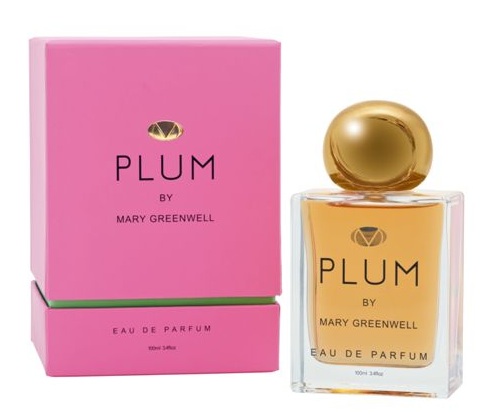Mary Greenwell Plum (2010) {Perfume Review & Musings}

British makeup artist Mary Greenwell released her debut signature fragrance in October 2010, titled "Plum." With a simple name, a pleasant packaging, her aesthetic credentials in tow, and the mystique of niche perfumery on her side, her scent soon garnered positive buzz, although it was not easy to come by. But this mere material obstacle fired up speculative desires and soon, a hum of delectation could be heard from threads to fora.
The perfume is billed as a "classic chypre with a twist" and was composed by perfumer François Robert over the course of two years, we are told...
One's first reaction to the perfume, I'm afraid to say, is to think that Plum smells like a let-down in general and more particularly, that it was overhyped in this case. There is a certain sense of delight for some to be able to wear a confidential perfume with a certain level of exposure - the best of both worlds - which seems to replace the sensation of wearing beautiful ingredients.
Plum opens on an overdose of purple grape, which would be the result of molecules such as Methyl Anthranilate and Butyl Anthranilate. In a vague sense, it recalls something of the personality of Ange ou Démon by Givenchy, but simplified to death. The "twist" seems to be that plum-colored accord, which does not really smell of plum - let's call it "abstract plum" - combined with gardenia.
Somehow, the addition of a host of notes: "plum, blackcurrant, peach, bergamot and lemon blend with heart notes of Gardenia, Tuberose Absolute, Orange Flower Absolute, Rose Absolute and Jasmine Absolute and a base of precious woods, Sandalwood, Oakmoss, Patchouli, Amber and White Musk," according to the press release, ends up like too much.
Edmond Roudnitska proposed the analogy of the mixing and addition of too many colors to explain how a fragrance formula could end up smelling like a non-descript, bad brown color. Unfortunately, Plum gives off this impression, but in the purple range.
The composition has little to no sense of detail; the gardenia barely managing to filter through, and it is all very much one-dimensional. The texture is light and middle-of-the-road.
Some perfumes smell more like stains on skins than compositions moving in space even if close to the body. A lip stain is appropriate for a color artist, but a fragrance which behaves like one is more like an "odor" than a fully-fledged composition.
What of the 2 years the creators reportedly spent working on the jus? Frédéric Malle notes in his book On Perfume Making that one of the hardest things to accomplish in perfumery is to know when to stop. This is why he is vehemently against custom-made fragrances, i.e., fragrances that are too dependent upon subjectivity rather than a higher aesthetic purpose. We are guessing also that in this case, there would have been issues with ingredient sourcing.
Plum is quite an imperfect and incomplete fragrance. It reveals all the pittfalls of improvised, amateurish niche-perfumery creation. Perfumery is definitely not an easy art and craft.









